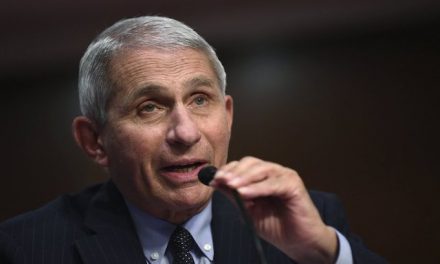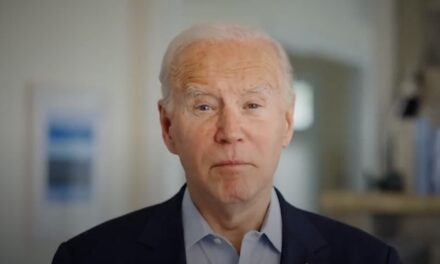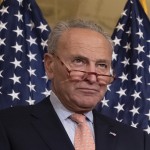With the steep shortage of teachers across the U.S. leaving school districts scrambling to staff their classrooms during the lingering COVID-19 pandemic, officials at the nation’s largest teachers union said this week that insufficient pay is fueling the growing crisis.
A recent release of the National Education Association’s data on educator pay and school funding coincided with Gov. J.B. Pritzker’s signing into law a slate of measures this week intended to address the teacher shortage in Illinois, including simplifying the licensing process, lowering licensing fees and easing restrictions for substitute teachers.
Despite the stepped-up statewide efforts, the NEA report unveiled new data union officials deemed “alarming,” including findings that during the 2020-21 school year, first-year teachers earned an average of $41,770, which, when adjusted for inflation, represents a 4% decrease from the previous year.
In Illinois, where Pritzker spearheaded a law that will raise the minimum salary for teachers to $40,000 by the 2023-24 school year, the NEA report rated the state 23rd in the nation, with an average teacher starting salary of $41,228.
With an average teacher salary of $70,705, Illinois ranks 13th in the nation, according to the NEA report.
Still, according to a recent analysis by the Economic Policy Institute of educator pay statistics, nationwide teachers on average make 19.2% less annually when compared with similarly educated workers, NEA officials said.
In addition, the report found teachers are bringing home $2,179 less per year, on average, than they did a decade ago, when adjusted for inflation, NEA officials said.
The “troubling trends” are especially difficult for educational support professionals, including paraprofessionals, teachers’ aides, custodians, cafeteria workers and bus drivers, officials said.
“These crucial public school employees are earning an average of at least $10,000 below a basic living wage in all but one state across the country. In fact, more than a third of all ESPs working full time earn less than $25,000 per year,” NEA officials said.
The recent report comes months after an NEA survey found that 55% of educators are ready to leave the profession earlier than planned and that teachers’ job satisfaction is at an all-time low during the COVID-19 pandemic.
Kathi Griffin, president of the Illinois Education Association, said Friday: “Teachers and support staff are suffering right now. It’s been blow after blow. The pandemic has been extremely challenging for everyone in our public schools.”
To make matters worse, Griffin said, “prices are skyrocketing and inflation is at a high point. And now we have the data to prove what we already knew: Teacher salaries are too low. … We need to bring respect and dignity to the profession, so we can keep the quality teachers we have and attract new dedicated, certified teachers to the profession.”
Illinois State Board of Education Superintendent of Education Carmen Ayala said at Wednesday’s bill signing that despite the hiring of 5,600 teachers across the state this school year, more than 2,100 certified teacher positions remain unfilled, many of which negatively affect low-income, bilingual and special education students.
The state board also reported a shortage of 2,400 paraprofessionals and an additional 900 vacant positions, including administrators and other school employees.
More than 5,000 positions at Illinois schools were unfilled due to a lack of qualified applicants, according to ISBE.
Underscoring the urgency of addressing the statewide teacher shortage, a recent survey of 663 school districts conducted by the Illinois Association of Regional School Superintendents found 88% of school districts reporting shortfalls of certified teachers, and 96% citing a scarcity of substitute teachers.
While west central Illinois appeared to have the most critical staffing hardships, with 95% of school districts in the region reporting teacher shortages, the challenges are not limited by geography, with 89% of rural, 88% of suburban and 85% of urban school districts reporting they struggle to find a sufficient number of educators.
A spokesman for Chicago Public Schools said Thursday that “like other districts, (CPS) has worked diligently to address the teacher shortage.”
While CPS currently has 616 open teaching positions — a vacancy rate of less than 3% — the number of open positions for the 2022-23 school year “will not be known until staffing models, based on budgets recently completed by school leaders, are reviewed and implemented,” CPS spokesman Evan Moore said in a statement.
In 2019, CPS also launched teacher residencies, a full-time, paid teacher-training program that offers a path to the profession for those hoping to make a career change.
At Elgin-based Unit School District 46, the district is seeking candidates for more than 500 open certified and noncertified positions, including 300 teachers, 39 administrators, 91 paraprofessionals and 85 other vacancies, such as secretary, food services, transportation, plant operation, maintenance, grounds, human resources and information services.
“This is a higher number of vacancies for teachers, paraeducators and administrators compared to prepandemic — something that was not experienced in the past,” District 46 spokeswoman Karla Jimenez said.
Last week the district launched the Horizons 4U Tuition Reimbursement Program, a collaborative initiative between neighboring universities and colleges aimed at providing current District 46 employees with support to pursue a career in teaching, as a certified school nurse, as a paraprofessional or within the trades, Jimenez said.
This summer, the district plans to create a cohort through Northern Illinois University for the district’s current teachers to earn a bilingual/ESL endorsement, with the courses offered online or at a district office in Elgin, she said.
The district is covering tuition for teachers accepted into the program who commit to five years of service with the district’s English language learners or dual language students, Jimenez said.
While there are likely no quick fixes for the state’s teacher shortage, the 28 students enrolled in Buffalo Grove High School teacher Tim Kosiek’s introductory class on teaching methods provide a ray of hope.
The class is offered at the beginning of the Township High School District 214 education “pathway,” which prepares students for teaching careers, including offering early college credit, internships and an Educator Prep program.
It aims to prepare students for teaching positions in the northwest suburbs and beyond. Teens who complete the program and go on to study teaching at National Louis University or Eastern Illinois University are guaranteed a student teaching position in the district or at one of the district’s partner schools, Kosiek said.
After college graduation, the students will be guaranteed a job interview if District 214 has an open teaching position in their degree area, he said.
Delivering a Thursday morning lesson to his students called “Equity in Education: What’s in a Grade?” Kosiek told his students about a former student “whose camera was never on when we were doing remote learning, and I was wondering why.”
“Well, it turned out she was working, and doing my class while she was helping to support her family,” Kosiek said. “Some of your students will go home to a big house, with two parents who have dinner on the table every night, and some will go home to a small apartment or mobile home, where they need to take care of their siblings and make dinner, so it’s not equitable.”
While some of Kosiek’s students shared concerns that if they do pursue a teaching degree, the modest starting salary might not be worth the investment in their college education, others, such as junior Natalie Santiago, appeared determined to make a difference.
“I want to be that teacher who when little kids are adults, they would look back and think of me, which would mean so much,” Santiago said.
©2022 Chicago Tribune. Visit chicagotribune.com. Distributed by Tribune Content Agency, LLC.
—-
This content is published through a licensing agreement with Acquire Media using its NewsEdge technology.



















Dear Liberal Politicians
You defund the police and advocate for reform—crime goes up—criminal detainment and punishment policies are relaxed more and more—police start leaving in droves—and you wonder why.
Teachers are being coerced into teaching subject matter that parents find inappropriate, and the teachers come under fire if they refuse to adopt questionable curricula—now a teacher shortage—and you wonder why.
Hospital workers were let go because they protested the COVID mandates—as reality did not justify the mandates and medical staff shortages increased and the original workers would not be allowed back—you wonder why.
Asinine policies resulting in consumer goods shortages and high gas prices leads to record inflation and empty shelves—and you wonder why.
What part of your own stupidity do you not understand??
ALL OF IT.. Remember, to libtards, NOTHING is ever “Their fault”
Maybe if they let some of the blue haired sex freaks go they would have more qualified teachers spending more time time teaching and less time grooming our children.
With the pablum that’s “taught” (?) in the majority classrooms today, most kids would learn more pertinent information by watching “The 3 Stooges” than they would in school anyway.
Plus they’d be laughing all the way home..